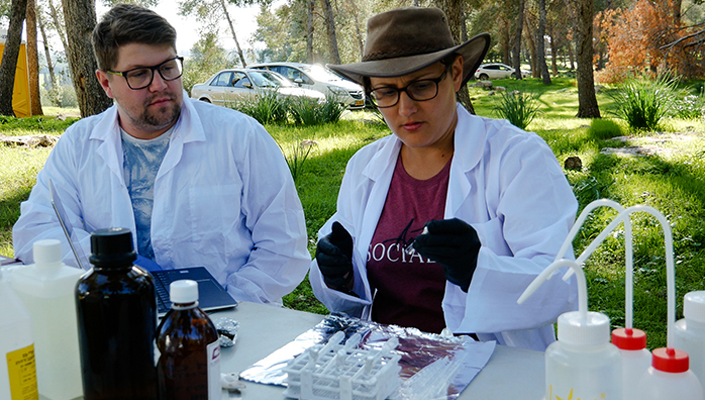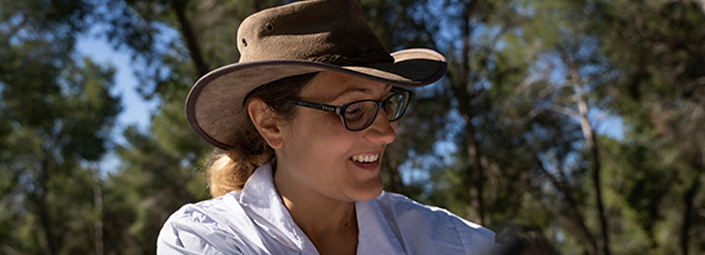Dr Sophia Aharonovich mixed her background in organic geochemistry and personal interest in history to find a niche as one of the few scientific archaeologists in Israel, and has just joined the Department of Ancient History at Macquarie.
What is your background and what brought you to Macquarie?
I started my university life in biochemical engineering. I have always had a fascination with history and archaeology and I was able to combine this with my scientific background through my Masters. In my research I analysed pollen grains from prehistoric sites in the Levant dated from Middle Palaeolithic to Neolithic periods (250 to 10 thousand years ago). I also did palynological analysis on biblical period sites such as Tel Dor and Tel Rehov, classical sites such as Sussita, and even Nabatean sites such as Shivta and Saadon. Later on I moved for my PhD to Macquarie where I worked on organic residues in deep ocean drilling sediments as part of the International Ocean Discovery Program (IODP). I proudly represented Australia as an organic geochemist on board of JOIDES Resulution during the Arabian Sea Monsoon expedition in 2015. After my PhD, in 2019, I joined the Ancient History Department in Macquarie University as an Honorary Research Fellow. During this time I joined Dr Kyle Keimer and Dr Gil Davis in their Israeli excavations of Khirbet el-Rai as course convenor and scientific archaeologist. My current research is concentrated on multi-proxy approach to archaeological data. I look into organic residue, pollen grains and phytoliths in sediments and archaeological tools to reconstruct climate, vegetation, dietary habits, and area use during the biblical period in Israel.
What has your recent research involved?
I have been working with Dr Gil Davis and Dr Kyle Keimer from Macquarie University’s Ancient Israel Program on an archaeological dig at Khirbet-el-Rai, Israel. From 2019 I have run an on-site field laboratory that allows us to teach students basic aspects of material culture sampling and real-time chemical analysis of the archaeological sediments. This is a first laboratory of its kind in Israel and probably the only one in the world on a biblical period site. The scientific research in Khirbet-el-Rai was financially supported by the Wakil family and the Education Heritage Foundation. By analysing the forensic footprint of the rock layers and archaeological material in the laboratory we can get a better understanding of site environment and city planning, dedicated usage areas, together with cooking and drinking habits of the city.

Sophia Aharonovich and Edward Clancy working in the field laboratory in Khirbet-El-Rai, Israel.
Why is your research important?
My research adds taste, smell, and colour to the archaeological picture. We can discover what, fruits and vegetables, herbs and spices people were consuming. We can find out what their environment was like and what different rooms in a house were used for. We can discover what their beds were made of and what colour clothes they were wearing. All this can be done through analysis of organic and botanical residues left by humans in the sediments, walls made of stone, and pottery. In Khirbet-el-Rai, this can help shed new light on Philistine, Judean, and Canaanite cultures' imprint in the area. This will give us a better understanding of co-existence patterns of different cultures and their ways of keeping cultural identity.
What is on your agenda for the remainder of 2020?
Like every working parent these days, to find a perfect way to juggle work and kids. As for my academic life for 2020, I would like to meet my new colleagues, try to establish new collaborative relationships, and introduce archaeological science to our Macquarie students.
Outside your own, what area of work or research in the Faculty of Arts inspires or intrigues you?
I am very fascinated by Australian Prehistory and aboriginal culture research. I would like to learn more about material culture and habitation habits of different tribes.
